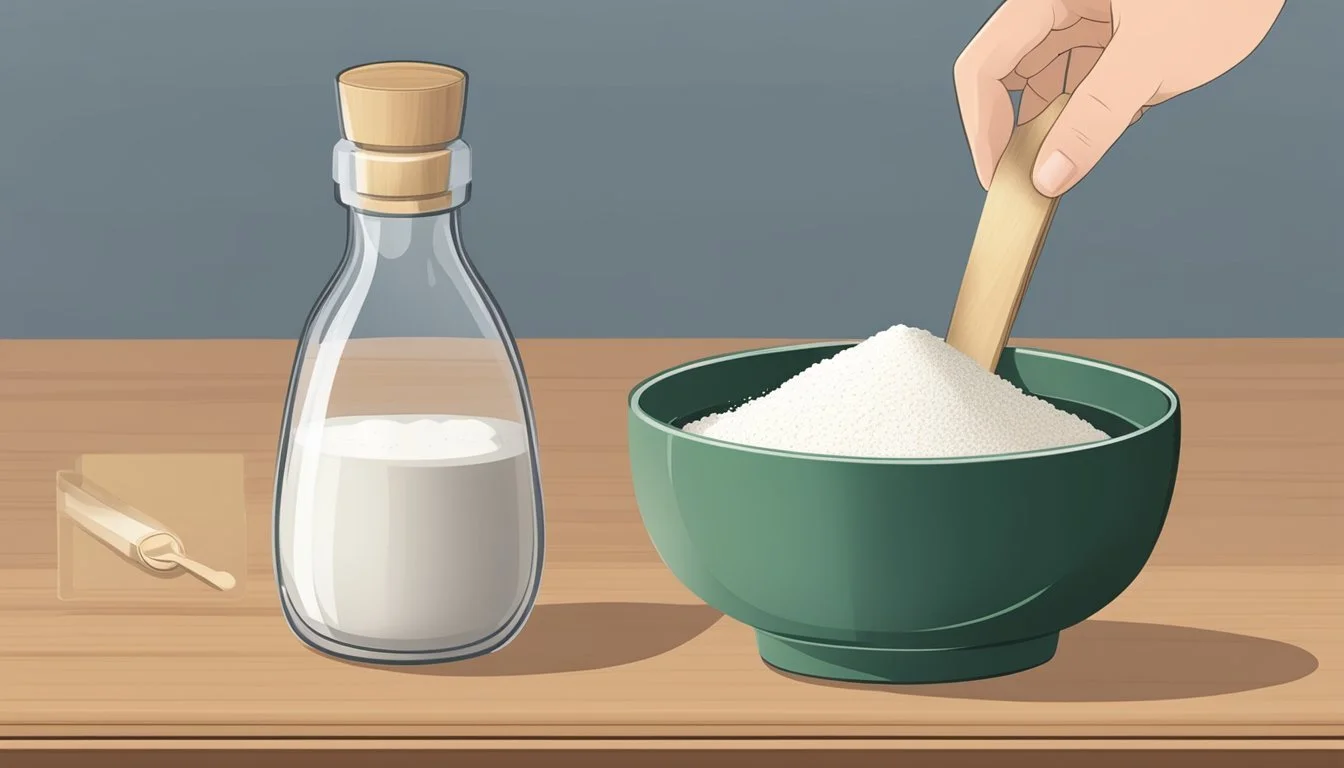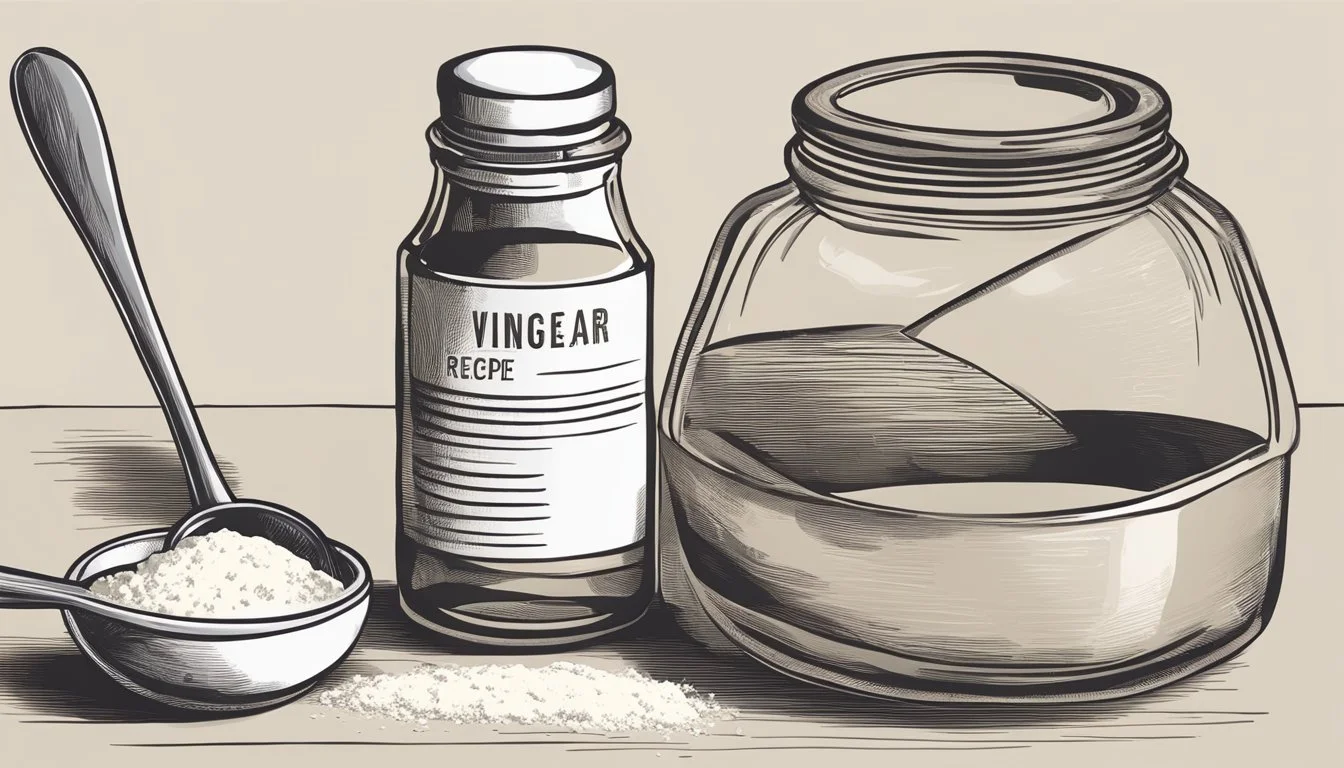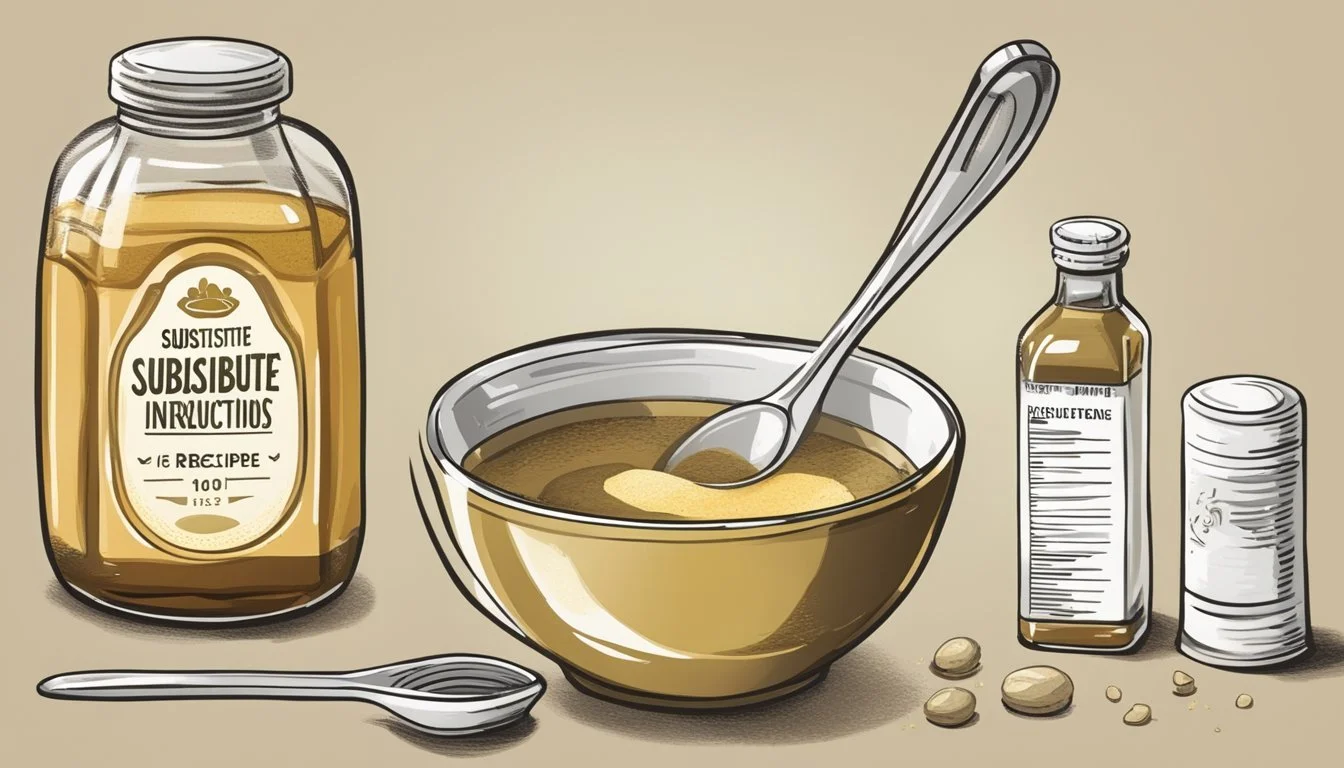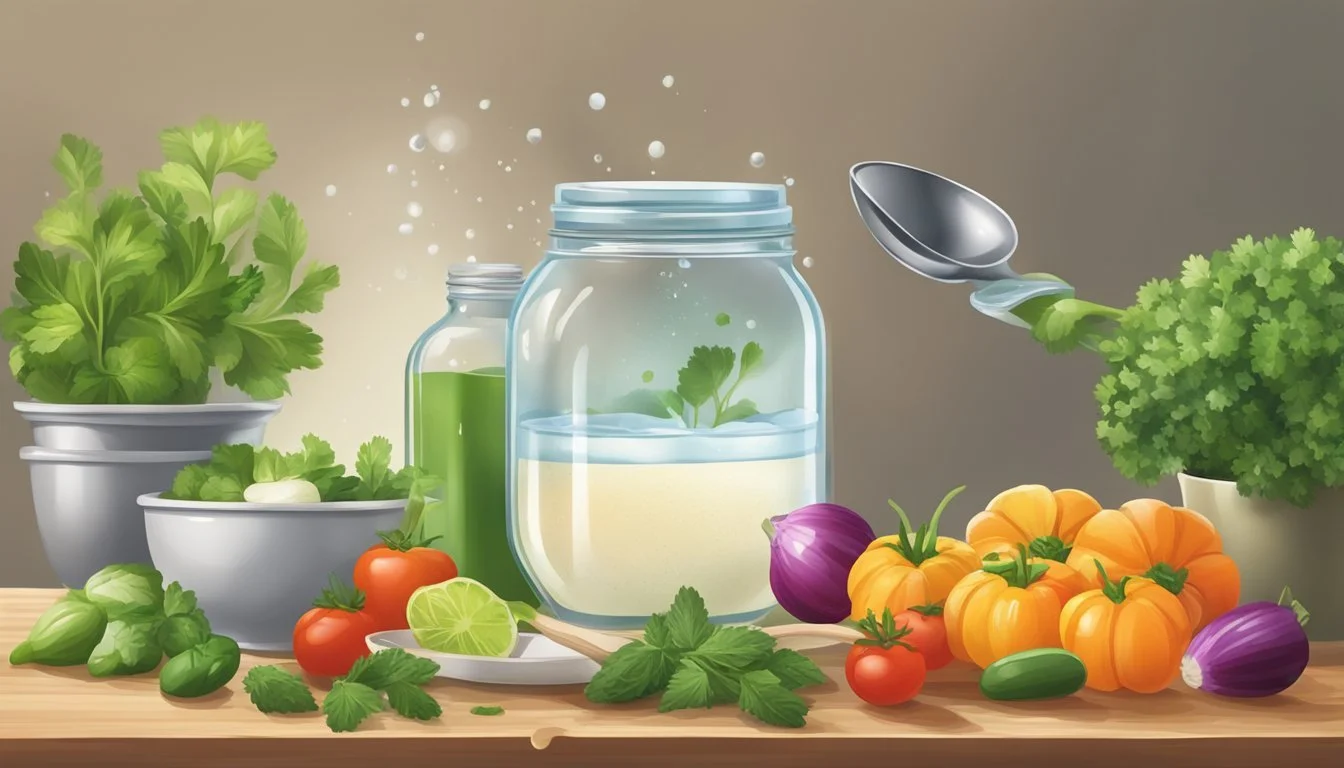How to Substitute Vinegar Powder for Fresh Vinegar
A Clear Guide
Vinegar powder offers a convenient and versatile alternative to liquid vinegar. It's a dehydrated form of vinegar that provides the same tangy taste in a more concentrated format. When using vinegar powder as a substitute for fresh vinegar, understanding the proper conversion ratio is crucial for maintaining the desired flavor profile and acidity in dishes. Typically, one part vinegar powder reconstituted with one part water by weight will yield a 5% acetic acid solution, mirroring the acid strength of standard liquid vinegar. This allows for a direct swap in recipes calling for fresh vinegar, ensuring that the balance of flavors and the intended chemical reactions, such as those in pickling or baking, are preserved.
The process of substituting vinegar powder for liquid vinegar doesn't end with merely mixing it with water. One must consider the specific type of vinegar required in the recipe to match the flavors accurately. For instance, rice vinegar powder is known for its milder taste and is often used in Asian cuisines, while apple cider vinegar powder might be favored for its subtle fruity undertones. By selecting the appropriate vinegar powder, cooks can adeptly tailor their dishes to achieve the precise taste and acidity needed.
In culinary applications where moisture content is critical, such as in dry rubs or when looking to reduce liquid in a recipe, vinegar powder proves to be a particularly valuable option. It allows chefs and home cooks alike to impart the distinct zing of vinegar without altering the moisture levels of their dish. This adaptability of vinegar powder to different culinary scenarios makes it a useful ingredient in any kitchen, especially when fresh vinegar is unavailable or impractical to use.
Understanding Vinegar and Its Role in Cooking
Vinegar serves as a versatile ingredient, contributing to the complex flavors and preservative properties in many dishes.
Types of Vinegar
Different types of vinegar offer unique flavors and are suited to specific culinary applications. Apple cider vinegar is made from fermented apple juice and carries a mildly fruity tang, making it suitable for dressings and marinades. Cider vinegar, often used interchangeably with apple cider vinegar, shares similar flavor profiles and uses. Wine vinegar, which includes red and white varieties, comes from fermented wine and presents a more sophisticated taste, ideal for sauces and condiments.
Benefits of Using Vinegar in Recipes
Incorporating vinegar into recipes delivers several benefits:
Flavor Enhancement: Vinegar can brighten dishes by introducing acidity, which balances richness.
Preservative Qualities: Its acidic nature makes it a key player in pickling, extending the shelf life of foods.
Health Benefits: Using vinegar, particularly apple cider vinegar, may offer health advantages such as improved digestion.
Each type of vinegar can be substituted with its respective powdered form to achieve the desired effect in cooking when fresh vinegar is not available.
Exploring Vinegar Powder
Vinegar powder offers a versatile and convenient alternative to liquid vinegar, with applications ranging from culinary enhancement to food preservation. Understanding its composition and culinary uses is essential for effectively substituting it for fresh vinegar.
Composition of Vinegar Powder
Vinegar powder is created by combining liquid vinegar with a carrier substance, typically maltodextrin. This process involves spraying the liquid onto the carrier, which then undergoes a drying process. Maltodextrin serves as an absorbent medium, allowing the vinegar to be dehydrated without clumping and consequently turned into a fine powder. The typical composition includes:
Liquid Vinegar: The source can vary, from apple cider to rice vinegar.
Maltodextrin: A polysaccharide that acts as a drying agent.
Culinary Uses of Vinegar Powder
The primary function of vinegar powder in cooking is as a seasoning agent. Its concentrated flavor is especially useful in applications where adding liquid would be undesirable. The culinary uses of vinegar powder are extensive; here are some of the key roles it can play:
Seasoning: Directly sprinkled onto foods such as popcorn or chips.
Marinades and Sauces: Adds acidity and tanginess without additional liquid.
Pickling: Used as part of a dry brine or in combination with other pickling ingredients.
Flavoring: Enhances the taste profiles of dishes with a bright, tangy note.
When substituting vinegar powder for liquid vinegar, it is essential to consider the moisture balance of the dish and adjust the amounts accordingly. A standard conversion is blending equal parts of vinegar powder with water by weight to approximate the strength of 5% acetic acid vinegar.
Substituting Vinegar Powder for Liquid Vinegar
When substituting vinegar powder for its liquid counterpart, it is imperative to understand the proper conversion rates and make specific adjustments based on the type of vinegar.
General Conversion Guidelines
To substitute vinegar powder for liquid vinegar, a general rule of thumb is to mix a part of vinegar powder with a part of water by weight to approximate the acid strength of a standard 5% acetic acid vinegar. This ensures that the vinegar powder reconstitutes to a similar acidity level. The basic conversion is therefore:
1 part Vinegar Powder : 1 part Water (by weight)
To replace liquid vinegar with vinegar powder in recipes, consider the following conversions:
Liquid Vinegar Vinegar Powder Water 1 tablespoon 1/2 tablespoon 1/2 tablespoon 1/4 cup 2 tablespoons 2 tablespoons 1/2 cup 1/4 cup 1/4 cup
Adjustments for Vinegar Type Variants
Different types of vinegar have distinct flavors and levels of acidity. Substitutions should respect these variations to maintain the integrity of the dish.
Red Wine Vinegar: Robust and strong, best replaced with an equal amount of red wine vinegar powder to preserve flavor depth.
White Wine Vinegar: Lighter and more delicate; white wine vinegar powder should be used for a similar profile.
Balsamic Vinegar: Distinctly sweet and thick. When substituting, add less water to preserve the syrupy consistency.
Rice Vinegar: Mild and slightly sweet, rice vinegar powder can be a direct substitute without altering flavor profiles much.
Malt Vinegar: Known for its punchy tang, substituting with malt vinegar powder should be done cautiously to not overpower dishes.
Champagne Vinegar: Subtle and elegant, champagne vinegar powder should be used sparingly to maintain its understated character.
Sherry Vinegar: Has a complex flavor that could be mimicked with sherry vinegar powder, though exact taste replication is challenging.
Fruit Vinegar: Fruit vinegar powders often carry additional sweetness and flavor, and less water may be required to reconstitute a true fruit vinegar essence.
In all cases, substitutions must be tested and tasted, as powder forms can sometimes impart flavor in different intensities compared to their liquid forms. Adjustments should be made to achieve the desired taste and acidity specific to the cuisine at hand.
Application-Specific Substitution Tips
When substituting vinegar powder for fresh vinegar, it's crucial to consider the desired taste and texture in specific applications. The ratio of vinegar powder to water and additional ingredients can make a significant difference in the outcome.
Substitutions for Salad Dressings
In salad dressings, where a tangy, sour flavor is often desired, one can replace fresh vinegar with vinegar powder effectively. For a dressing requiring 1 tablespoon of 5% vinegar, blend 1/4 teaspoon of vinegar powder with 1 tablespoon of water. This maintains the dressing’s acidity without diluting its flavor.
Substitutions for Marinades
Marinades typically rely on vinegar's acidity to tenderize proteins and imbue flavor. Here, a more robust tang may be preferred. Use a 1:1 ratio by blending equal parts of vinegar powder and water to mimic the fresh vinegar's strength. Add sugar or honey to balance the tanginess, if needed.
Substitutions for Pickling
Pickling demands a precise acidic environment for food preservation. To achieve the equivalent of 50 grain vinegar (5% acetic acid), mix 1 part vinegar powder to 1 part water by weight. This will provide the sour taste and essential acidity required for pickling.
Substitutions for Baking
In baking, vinegar is often used to react with baking soda, providing leavening. Since moisture balance is vital, reconstitute vinegar powder by combining 1 part powder to 1 part water. This ensures the proper acid concentration without adding excess liquid to the recipe.
Fine-Tuning Flavor and Acidity
When substituting vinegar powder for fresh vinegar, one must accurately adjust the flavor profile and acidity to achieve the desired balance in the dish. This can involve tweaking sweetness, enhancing tanginess, and adding fruity nuances.
Balancing Sweetness
To temper the sour flavor that vinegar brings to a dish, one might need to balance it with a touch of sweetness. Vinegar powder can be particularly concentrated, so a careful hand is needed. For a nuanced sweet counterpoint, consider incorporating ingredients such as honey or sugar. The typical ratio to start with could be:
1 teaspoon vinegar powder
1/2 teaspoon sugar or honey
Adjust this balance depending on the flavor profile sought after.
Enhancing Tanginess
Vinegar is prized for its tangy quality, a centerpiece for many recipes. If the goal is to enhance this aspect using vinegar powder, one may need to increase the powder quantity slightly or bolster it with other acidic components. Citric acid is a common additive that can amplify the sour flavor. A simple approach may involve:
1 teaspoon vinegar powder
1/4 teaspoon citric acid
This should provide a sharper edge to dishes that require a pronounced tanginess.
Adding Fruity Notes
Sometimes a recipe calls for a hint of fruity flavor alongside the acidity—an attribute fresh citrus juices impart effortlessly. When using vinegar powder, one can introduce a similar character by mixing it with powdered forms of citrus fruits such as lemon or lime. For instance:
1 teaspoon vinegar powder
1/4 teaspoon lemon juice powder or lime juice powder
This can mimic the fruity notes, adding complexity to the dish's flavor profile without overwhelming it with additional liquid.
Additional Ingredient Alternatives
When fresh vinegar isn't an option, a chef can turn to various alternatives to achieve similar acidity and tang in dishes. They can select from citrus-based substitutes or other natural acidic alternatives depending on the recipe's requirements.
Citrus-Based Substitutes
Citrus fruits offer a natural and readily available source of acidity. They can serve as effective substitutes for vinegar in many culinary applications:
Lemon Juice: It's a versatile alternative, providing a bright, tangy flavor. Typically, one tablespoon of lemon juice can replace one tablespoon of vinegar.
Lime Juice: Slightly more aromatic than lemon, lime juice brings a distinct zesty note. Use it in a 1:1 ratio when substituting for vinegar in recipes.
Other Natural Acidic Substitutes
Sometimes a recipe may benefit from other acidic ingredients that contribute both flavor and the required acidity:
Grape Juice: Although less acidic, grape juice can add a mild tartness along with sweetness. It's often paired with a stronger acid like citric acid for balance.
Tamarind Paste: It offers a unique sourness and is commonly used in Asian and Latin American cuisines. The paste should be diluted and used sparingly as it is quite potent.
Citric Acid: A powerful concentrated acid, citric acid should be used in small quantities. Generally, a quarter teaspoon can be used to replace two tablespoons of vinegar.
These substitutes should be tailored to suit the specific dish and its flavor profile, ensuring a seamless culinary experience despite the absence of vinegar.
Health and Dietary Considerations
When replacing fresh vinegar with vinegar powder, individuals should consider how this substitution impacts the nutritional content, particularly in terms of calories, sugars, sodium, and potential allergens.
Calorie and Sugar Content
Vinegar powder usually contains fewer calories compared to an equivalent volume of liquid vinegar, as it's dehydrated and more concentrated. However, one should verify if any additional sugars have been added to the powder during processing, as this could affect overall calorie content.
Calories: Often lower in vinegar powder due to water removal.
Sugars: Check labels for added sugars which increase calorie content.
Sodium and Allergen Information
Those monitoring their sodium intake need to read nutritional labels on vinegar powder carefully, as some brands may include sodium-based additives. Additionally, vinegar powder should be confirmed to be gluten-free if there are gluten sensitivities since additives might contain gluten.
Sodium: Can vary widely between brands; always read labels.
Allergens: Look for gluten-free certification if necessary. Watch for other potential allergens depending on processing and added ingredients.
Storing and Handling Vinegar Products
When it comes to vinegar products, maintaining their freshness and potency is crucial. Proper storage methods and understanding how to extend the shelf life are the foundational steps for handling both vinegar powder and liquid vinegar.
Extending Shelf Life
To extend the shelf life of vinegar products, one should ensure that they are kept in airtight containers. This prevents the absorption of odors and the potential deterioration of quality. For vinegar powder, it's particularly important to minimize exposure to moisture, which can cause clumping and reduce potency.
Vinegar: Should be stored in its original packaging or in a sealed container.
Vinegar Powder: Must be kept dry and in a moisture-free environment.
Proper Storage Methods
Vinegar, being acidic, is self-preserving to some extent, but to maintain its quality, it should be stored out of direct sunlight in a cool and consistent temperature range, between 50 to 70 degrees Fahrenheit.
Location: Store away from heat sources and windows to avoid temperature fluctuations.
Container: Use glass or other non-reactive containers for liquid vinegar; store vinegar powder in airtight, moisture-proof containers.
Temperature: Keep at a consistent, cool temperature to preserve freshness.
Creative Culinary Applications
Using vinegar powder as a substitute for fresh vinegar opens the door to innovative dishes and distinctive flavor profiles. A key advantage of vinegar powder is its ability to introduce acidity and complexity without additional liquid, ideal for dry rubs, seasonings, and snacks.
Innovative Recipes
A clever use of vinegar powder transforms traditional recipes into something new and exciting. For instance, incorporate vinegar powder into dry rubs to create an unexpected zing on meats without affecting their moisture content. One can experiment by adding it to homemade potato chips for a tangy twist or employ it in baking to provide a subtle tartness in bread.
Dry rubs for meats: Combine 1 part vinegar powder with 2 parts each of garlic powder and paprika, plus a touch of salt and black pepper.
Tangy chips: Lightly sprinkle vinegar powder over freshly baked or fried chips to taste.
Baked goods: For every cup of flour in a recipe, stir in 1/2 teaspoon of vinegar powder.
Unique Flavor Combinations
Vinegar powder is a versatile ingredient, adept at enhancing a wide range of dishes with its nuanced acidity. When crafting chutneys, it can supply a concentrated burst of brightness without diluting the consistency. In the realm of vinaigrettes, one could forge an innovative dry mix to be later reconstituted or used as a seasoning. For soups (What wine goes well with soups?), a dash of vinegar powder can bring the flavors into focus right before serving.
Chutneys: Add 1 teaspoon of vinegar powder per cup of chutney for added tang.
Vinaigrette mixes: Combine 2 parts oil with 1 part vinegar powder and desired herbs and spices for a shelf-stable dressing base.
Soups: Stir in a small amount of vinegar powder right before serving to taste, enhancing the soup's depth.
Conclusion
In this section, we consolidate our understanding of vinegar powder's versatility and provide guidance for its culinary substitution.
Recap of Vinegar Powder Uses
Vinegar powder serves as a convenient and versatile ingredient in the kitchen. Chefs and home cooks often use it to enhance flavor without adding liquid, making it ideal for dry rubs, seasoning blends, and snack coatings. Its ability to transform into a liquid form upon reconstitution further extends its utility, allowing it to mimic the acidic profile of fresh vinegars in dressings, marinades, and sauces.
Final Thoughts on Substitution
When substituting vinegar powder for liquid vinegar, the key is to maintain the balance of acidity and flavor. To approximate the acid strength of a 5% vinegar solution, one part vinegar powder to one part water by weight is typically mixed. For culinary applications, this reconstituted mixture can replace vinegar in equal proportions, keeping in mind the original vinegar's flavor profile to best match the dish's intended taste.









